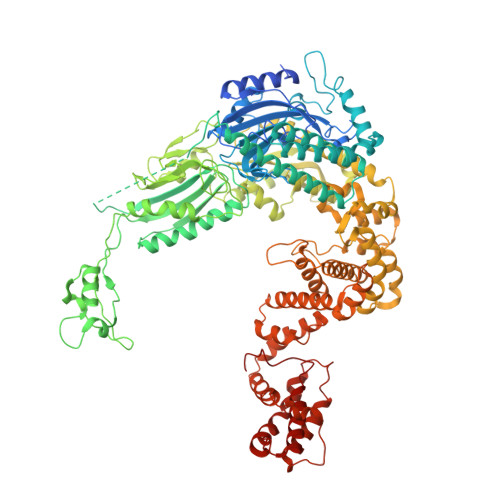Structural basis of a two-step tRNA recognition mechanism for plastid glycyl-tRNA synthetase.
Yu, Z., Wu, Z., Li, Y., Hao, Q., Cao, X., Blaha, G.M., Lin, J., Lu, G.(2023) Nucleic Acids Res 51: 4000-4011
- PubMed: 36912079
- DOI: https://doi.org/10.1093/nar/gkad144
- Primary Citation of Related Structures:
7XJY, 7XJZ, 7XK0, 7XK1, 8H1C - PubMed Abstract:
Two types of glycyl-tRNA synthetase (GlyRS) are known, the α2 and the α2β2 GlyRSs. Both types of synthetase employ a class II catalytic domain to aminoacylate tRNAGly. In plastids and some bacteria, the α and β subunits are fused and are designated as (αβ)2 GlyRSs. While the tRNA recognition and aminoacylation mechanisms are well understood for α2 GlyRSs, little is known about the mechanisms for α2β2/(αβ)2 GlyRSs. Here we describe structures of the (αβ)2 GlyRS from Oryza sativa chloroplast by itself and in complex with cognate tRNAGly. The set of structures reveals that the U-shaped β half of the synthetase selects the tRNA in a two-step manner. In the first step, the synthetase engages the elbow and the anticodon base C35 of the tRNA. In the second step, the tRNA has rotated ∼9° toward the catalytic centre. The synthetase probes the tRNA for the presence of anticodon base C36 and discriminator base C73. This intricate mechanism enables the tRNA to access the active site of the synthetase from a direction opposite to that of most other class II synthetases.
Organizational Affiliation:
State Key Laboratory of Genetic Engineering, School of Life Sciences, Zhongshan Hospital, Fudan University, Shanghai 200438, China.















